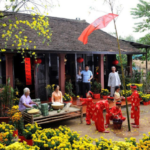Carnations are a popular flower during the Tet holiday in Vietnam due to their beauty and festive cheerfulness. Let’s explore everything about carnations, including their characteristics, meanings, and care tips for the most beautiful blooms.
1 What are Carnations?
Carnations, also known as gillyflowers, are part of the Caryophyllaceae family and are predominantly found in Europe, Fujian, Hubei, and some other regions in mainland China.
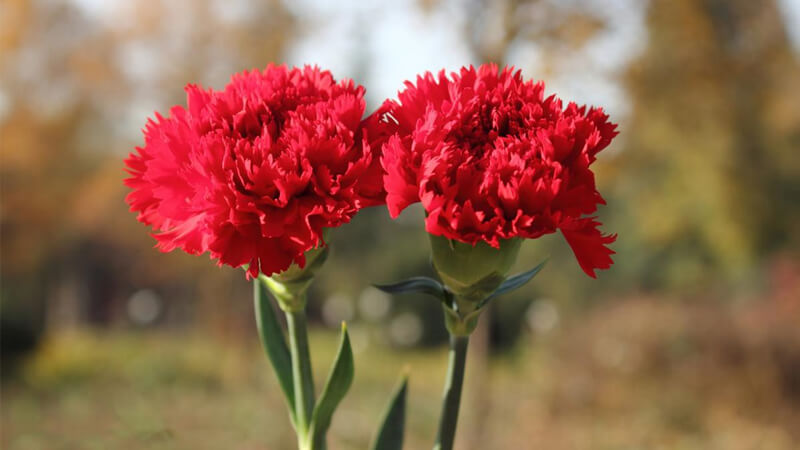 Carnations blooming in the sun
Carnations blooming in the sun
This flower originates from the Mediterranean region and is one of the most popular flowers worldwide, not just in Vietnam. Carnations come in many varieties, including hybrids, but they are typically divided into two main types: single and double carnations, with a rich palette of colors. They bloom almost continuously when grown in greenhouses.
Carnation plants are herbaceous and can grow up to 80 cm tall. Their leaves are grayish-green to green, slender, and about 15 cm long. The plants usually grow individually or in clusters, emitting a sweet and pleasant fragrance. The flowers are bisexual, with symmetrical petals, ovate leaves with sharp edges, and spines.
2 Characteristics of Different Types of Carnations
Interestingly, carnations initially only occurred in a bright pink shade. However, due to the demands of floriculture and advancements in science and technology, various hybrids have been created, resulting in different colors such as red, yellow, white, blue, and green, as well as unique striped variants.
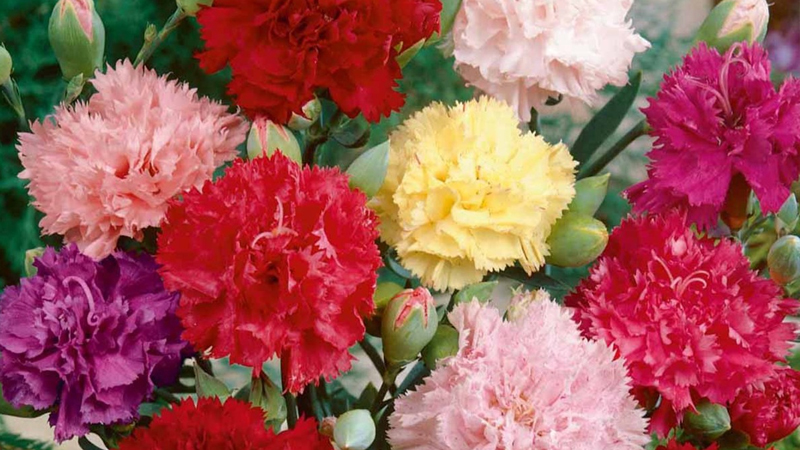 The vibrant colors of carnations
The vibrant colors of carnations
The blooming season for carnations is from May to October. There are approximately 300 species and 1000 cultivars of carnations. They are often classified based on the size of the flowers. Carnations thrive in sunny conditions, so ensure they receive ample sunlight for optimal growth. They also prefer cooler temperatures, ranging from 12-20°C, and are intolerant of heat. Different colors of carnations have distinct temperature requirements.
In Vietnam, several types of carnations are commonly found:
Border Carnations: These are perennial plants that can live for many years. There are two subtypes: border carnations and florist’s carnations.
Border Carnations: These grow in bushes, reaching a height of 30-35 cm, with flowers spanning 3-5 cm. They tend to grow in grassy areas.
Florist’s Carnations: These are typically grown in greenhouses or outdoor gardens and prefer a cool climate. They can grow taller than 1 meter and produce fragrant flowers in various colors, including pink, orange, purple, and yellow.
Rose Bowl: This perennial species has narrow, gray-green leaves. The flowers are highly fragrant and exhibit a delicate pink hue, measuring about 2.5 cm in width and 15 cm in height. They bloom year-round.
 Different types of carnations
Different types of carnations
Rock Pink, Dianthus pavonius (D.neglectus): This is the smallest type of garden rock carnation, known for its vigorous and long-lasting growth. Its narrow, gray-green leaves grow in clusters. The flowers are a vibrant red and measure about 2-3 cm in width.
Sweet William, D.barbatus: This variety has sturdy stems, reaching heights between 2-25 cm. The leaves can be light or dark green. The flowers grow in clusters and have a subtle fragrance. They come in various colors, including red, white, and purple. Notably, this cultivar is planted in early spring and blooms during the summer.
3 The Legend of Carnations
There is a romantic legend associated with the origin of carnations.
It is said that a young woman named Margherita gave her lover, a knight named Orlando, a white carnation before he departed for battle. Orlando kept the flower close to his heart during the fight. Unfortunately, he was severely wounded, and his blood stained the petals of the flower.
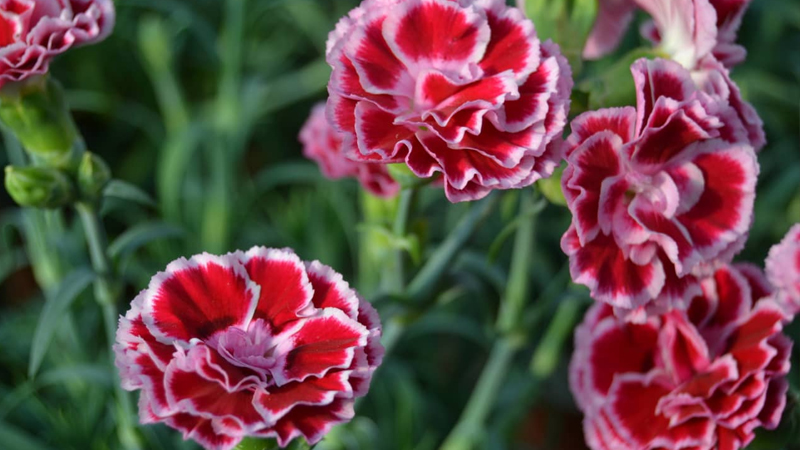 The red center of the carnation resembling Orlando’s blood
The red center of the carnation resembling Orlando’s blood
The flower was then brought back and given to the grieving Margherita. She planted it, and a beautiful garden grew from it. However, the flowers that bloomed had a distinct red center, resembling the blood of her beloved Orlando. Margherita remained unmarried for the rest of her life, cherishing the memory of their love.
To commemorate this tragic yet noble love story, the flowers were named carnations, honoring the beautiful and faithful princess who awaited her lover’s return.
4 Meanings of Carnations by Color
Carnations come in a variety of colors, and each color carries a unique and distinct meaning.
Striped Carnations: These signify rejection or the refusal to accept another’s affections.
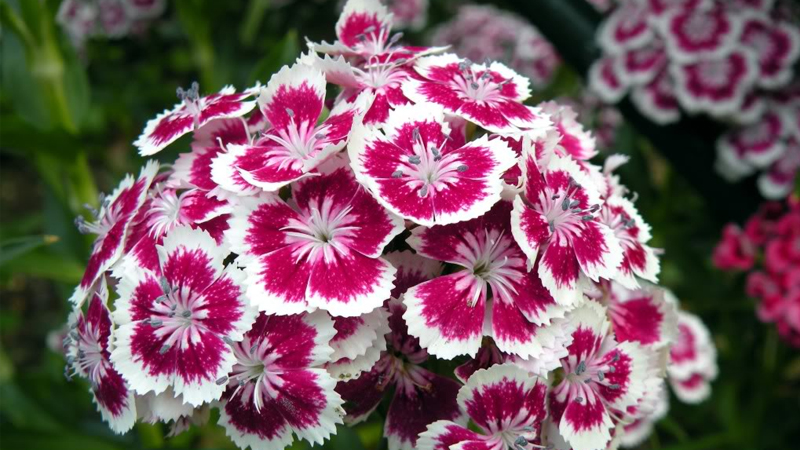 Striped Carnations
Striped Carnations
Pink Carnations: These symbolize eternal and faithful love and represent a mother’s forgiveness and tolerance for her children.
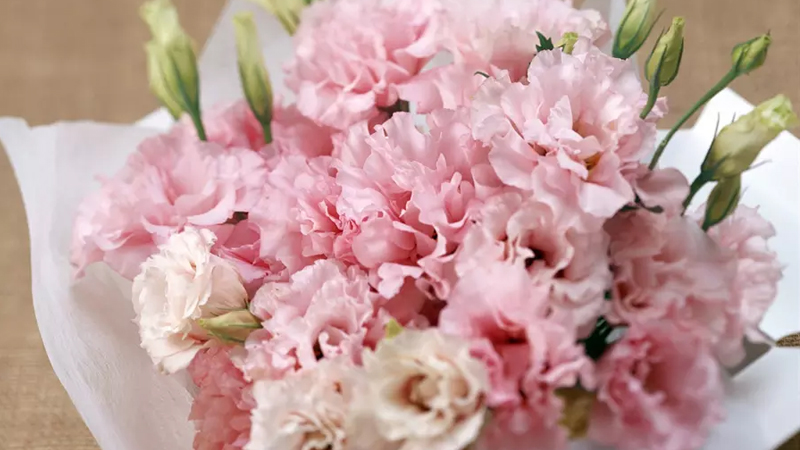 Pink Carnations
Pink Carnations
Red Carnations: They represent admiration and reverence.
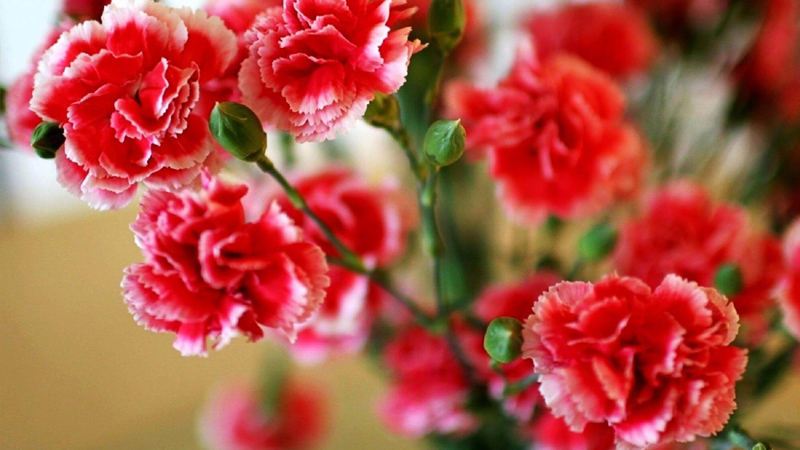 Red Carnations
Red Carnations
Dark Red Carnations: These convey a sense of anguish and torment in love.
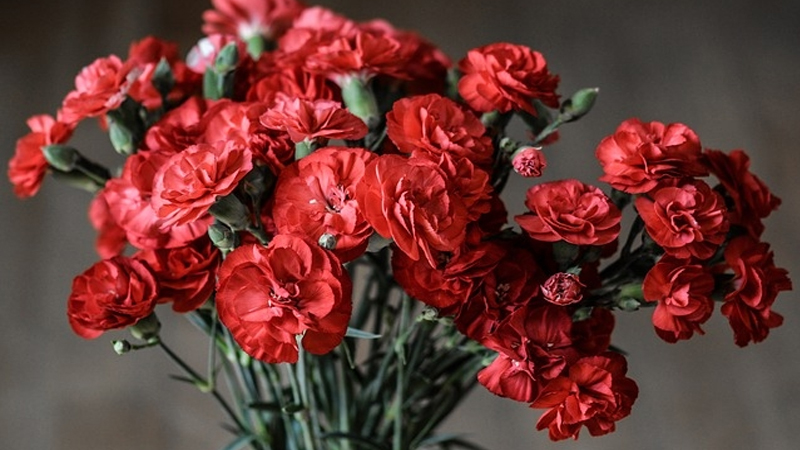 Dark Red Carnations
Dark Red Carnations
Yellow Carnations: They signify disappointment, regret, or contempt.
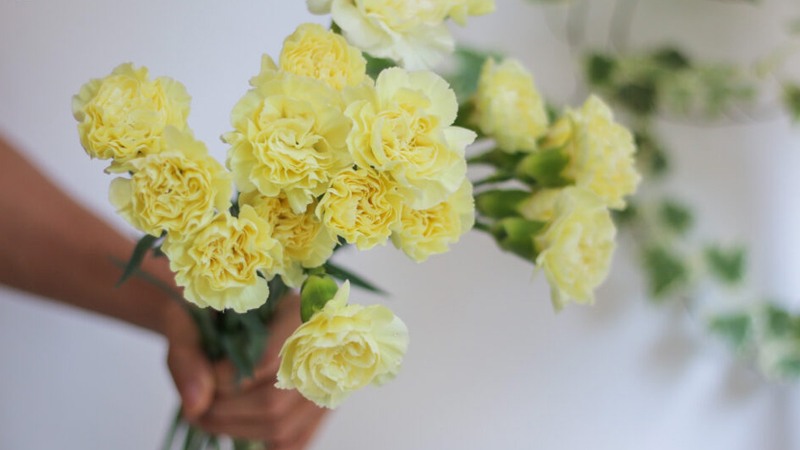 Yellow Carnations
Yellow Carnations
Purple Carnations: These represent capriciousness, akin to a girl with an unpredictable temperament.
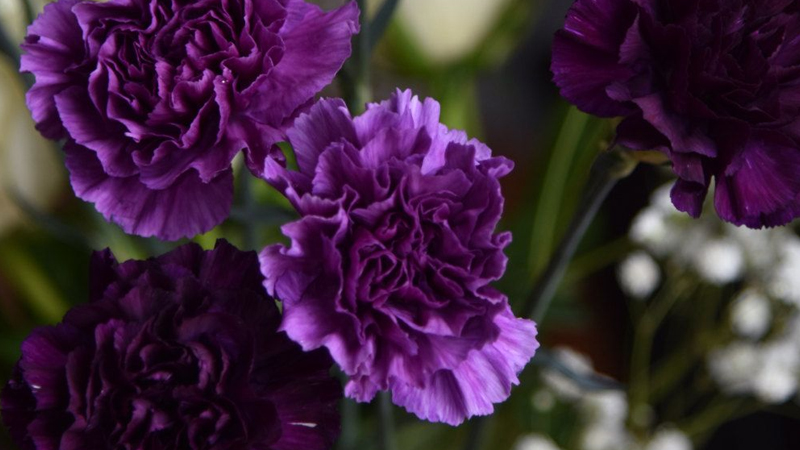 Purple Carnations
Purple Carnations
White Carnations: They symbolize purity, sweetness, and innocence. This flower also brings luck and pure love to women.
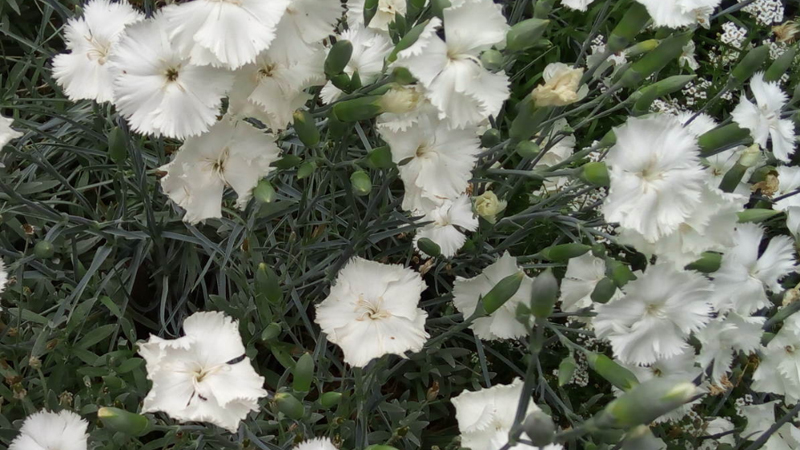 White Carnations
White Carnations
5 Tips for Caring for Carnations to Ensure Beautiful Blooms
To ensure the healthy growth and development of carnations, resulting in fragrant and beautiful flowers, consider the following care tips:
Carnations will sprout at temperatures around 18°C. During cold weather, keep the plants under a porch or awning while still providing access to sunlight, as they thrive in bright conditions.
Carnations do not tolerate waterlogging, so allow the soil to dry out between waterings. For newly planted carnations, water three times a day to encourage germination. In subsequent days, water twice a day, maintaining moist soil.
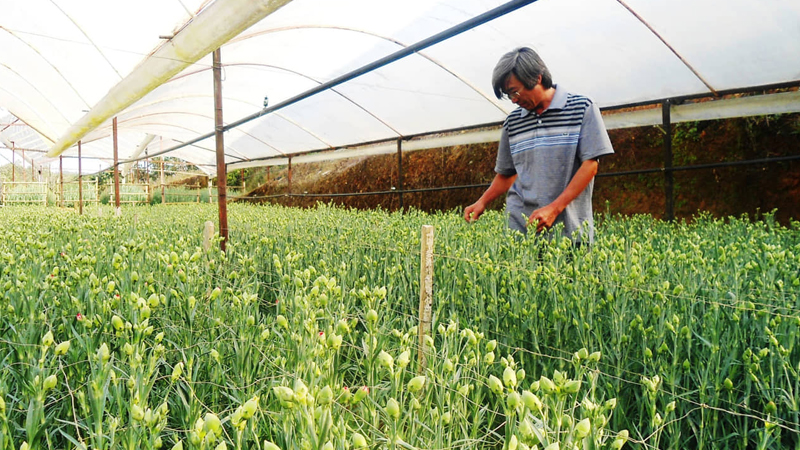 Caring for carnations in a greenhouse
Caring for carnations in a greenhouse
When the plant starts to bud, apply NPK fertilizer in the ratio N:P:K = 1:2:3. The types of fertilizer are urea, triple superphosphate, and potassium sulfate.
Carnations are susceptible to bacterial leaf spot and basal rot, so treat the soil with Falizan and spray with Bactoudes at the first sign of infection.
For single carnations, pinch off secondary buds to allow the primary bud to develop fully. For spray carnations, remove the primary buds and keep the secondary ones. Regularly pinch off the growing tips of the plant.
Now you know all about carnations, their meanings, and how to care for them to ensure beautiful blooms. We hope this knowledge boosts your confidence in displaying these lovely flowers in your home. Explore more types of March 8 flowers to gift to the special women in your life!
Explore 12 Amazing Destinations for Biking Trips
Unlock Vietnam in a brand new way with an exciting biking tour! Discover the stunning beauty of the country with Dien May XANH’s top 12 must-see destinations. From sweeping plains to clear blue beaches and mountainous vistas – experience all the sights with your own personal cycling tour. Find your ideal route and set out for an adventure today!

























